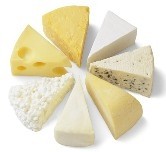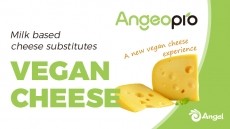Chr. Hansen targets Eastern cottage cheese chic

Speaking to DairyReporter.com, Theis Bacher, Chr. Hansen’s marketing manager, cheese cultures, said that the Fresco cultures, which are sold in concentrate form at -45C, contained Lactococcus lactis subsp. cremoris, Lactococccus lactis subsp. lactis, and Streptococcus thermophilius strains.
Bacher said the series ensured a 2-5 per cent cheese yield increase for sizeable cottage cheese producers: “Nowadays, almost all the customers are big. And the amount of cheese they typically make is 5,000 tonnes per year to around 20,000 t/a. This has an interest for all of these customers.”
Other benefits claimed for the Fresco series include a smooth texture and mild taste, and global bioscience firm Chr. Hansen said that the high protein, low fat and low sugar content of cottage cheese, “hits the healthy dairy trend spot on”.
Cottage cheese reprise
Bacher said that the cottage cheese category has long been characterised by low growth and low innovation, but recent packaging and fruit flavour innovations had brought cottage cheese closer to the yogurt segment.
Asked what trends Chr. Hansen’s was experiencing, Bacher said: “Something that’s really interesting about this industry, is that in the emerging markets (Russia, Belarus and Poland) eating cottage cheese is considered very western and cool, the new way of eating breakfast and snacks.”
He added: “In these countries, and you can even include the Baltics and Kazakhstan, places like this, they traditionally eat tvorog (it’s like feta cheese but not that salty), the traditional product. But more and more are switching over to cottage cheese, which is considered a more modern, western product.
“It’s a bit like hamburgers and blue jeans in the 1950s in the UK, Denmark. For us the big market [for cottage cheese cultures] is the US, Europe and these countries in Eastern Europe, Russia, Belarus, Poland.”
Bacteriophage protection
Robustness against bacteriophage (phage) attacks are another advantage that Chr. Hansen claims for the new series, and Bacher said attacks were a classic problem for cheese producers, where phages (viruses) found in the environment essentially lyse (break down) starter cells.
Bacher said: “This is probably one of the biggest problems for the cheese industry as a whole. In some cases phages will kill the bacteria, and since we sell live, healthy cultures to our customers, it’s a big problem if these cultures are not working because they’re being attacked by a virus or phage.
“Over the years we have developed cultures that are more robust. We screen for these viruses, so we know what is out in the environment, then we test to see if our cultures are resistant to these viruses.”
Chr. Hansen discarded non-resistant cultures, Bacher said. “We also know that some bacteria have a sort of naturally occurring coat around them, which is more difficult for the virus to attack. We deliberately screen for those bacteria that have a protective capsule around them,” he added.
Yogurt cultures adapted
Bacher also said that Chr. Hansen had adapted its expertise in the yogurt sphere to develop Fresco 3000, using “texturising water-binding strains, which retain moisture during the cook-out procedure”.
He said: “This is directly linked to the cottage cheese yield increase of 2-5 per cent. In yogurt technology, we have been looking for strains over the years to make yogurt more viscous or thicker. That’s a natural trend in the industry.
“People used to add various starches or protein to get a good mouth-feel or thickness in yogurt. What we have done is developed cultures that can produce this thickness in a natural way, without having to add starches or any other ingredients besides just milk.”
He said: “We have taken the cultures from the yogurt segment, and are now using this in cottage cheese. This thickness is really water-binding, our cultures now bind more water, but without the cheese curd looking or feeling wet.
“This allows the producer to make that 2-5 per cent more cottage cheese, and for one of those bigger accounts (15,000t a year), this could save you millions.”
Bacher said Chr. Hansen sparked an ongoing international conversion from bulk starter production of cottage cheese (grown onsite within dairy plants) to direct-to-vat technology around 10 years ago, with more than 50 per cent of the world’s cottage cheese (600,000t) now made using that method.
He said: “What typically happens is that a plant will get a phage attack to their existing bulk starter, they then call us looking for a stronger culture that can resist these phages or viruses at the plant. Then they switch over – that’s a typical pattern.”





























